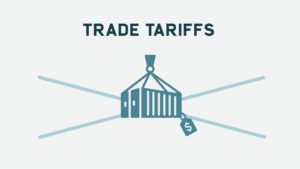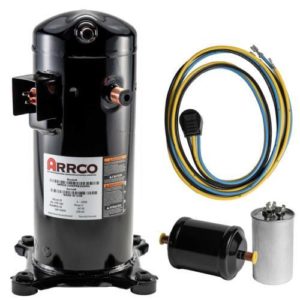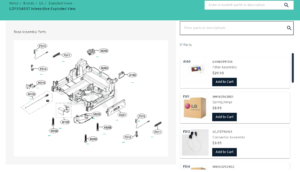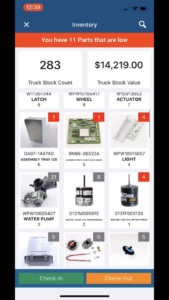Parts Town Unlimited Launches “Town Shares” Program to Give All Team Members Ownership
New initiative provides all team members the opportunity to share in the company’s success
 ADDISON, Ill., March 26, 2025 – Parts Town Unlimited, the parent company of Parts Town, the global leader in high-tech distribution of OEM foodservice equipment parts, residential appliance parts, HVAC parts, consumer electronic parts, and related products, today announced the launch of its “Town Shares” employee ownership program, designed to allow team members to share in the company’s long-term success. This game-changing program applies to all team members across Parts Town Unlimited’s 46 brands, spanning 147 global locations and a workforce of over 5,500 worldwide.
ADDISON, Ill., March 26, 2025 – Parts Town Unlimited, the parent company of Parts Town, the global leader in high-tech distribution of OEM foodservice equipment parts, residential appliance parts, HVAC parts, consumer electronic parts, and related products, today announced the launch of its “Town Shares” employee ownership program, designed to allow team members to share in the company’s long-term success. This game-changing program applies to all team members across Parts Town Unlimited’s 46 brands, spanning 147 global locations and a workforce of over 5,500 worldwide.
Parts Town Unlimited sees this as an important investment in its people. While the exact amount of any ownership program payouts will depend on overall company performance, the Town Shares program is intended to become a meaningful wealth-creation opportunity to significantly impact the lives of team members and their families. Participation in the program is free for team members and provided in addition to their regular salary and benefits.
By creating a culture of ownership, Parts Town Unlimited is building something truly unique in today’s corporate landscape – where team members not only understand the impact of their contributions but have a real stake in it. This allows team members to feel a greater sense of purpose and stronger empowerment to speak up with ideas that drive innovation and growth. Instilling an ownership mindset has the potential to not only drive better business outcomes, but result in increased team member engagement, stronger loyalty, attract top talent, and further strengthen overall company culture.
“We believe the magic and success of Parts Town Unlimited is created through our outstanding people who are passionate about taking care of our customers, living our core values, and going above and beyond to deliver extraordinary results. We believe that we have a responsibility to provide team members the ability to meaningfully benefit financially from the growth that they drive within the organization. It’s simply the right thing to do, both for our people and for our company.” said Steve Snower, Sixth Man (aka CEO), Parts Town Unlimited. “We are very proud to launch our Town Shares program. In my 21 years of leading Parts Town Unlimited, this is the most exciting and fulfilling program we have launched because it allows ALL team members to share in the value they help to create.”
Berkshire Partners, Leonard Green & Partners, and Roark Capital, Parts Town Unlimited’s private equity partners, have been instrumental in championing the Town Shares program, recognizing that fostering a culture of ownership is more than just a business strategy; it’s a powerful driver of long-term success, deeper engagement, and greater financial opportunity. Their support underscores a shared commitment to empowering team members, aligning business growth with personal prosperity, and setting a new standard for corporate culture.
“We are incredibly proud to support Parts Town Unlimited in launching this transformative program,” said Candice Corvetti, Managing Director, Berkshire Partners. “Parts Town’s success is built on the dedication and hard work of its people. The Town Shares program reflects our deep commitment to sharing that success with every team member. We believe it aligns with our core values, rewards the team’s ownership mindset, and creates meaningful financial opportunities for the entire Parts Town team and their families.”
About Parts Town Unlimited
Parts Town Unlimited is the parent company of over 45 unique brands worldwide which collectively serve as a global leader in the high-tech distribution of genuine original equipment manufacturer (OEM) parts for foodservice equipment, residential appliances, HVAC equipment and consumer electronics, as well as related products and services. Parts Town Unlimited is constantly working to create user-friendly parts identification tools, expand its high-tech distribution capabilities and foster forward-thinking innovations.
Guided by its core values of Safety, Integrity, Community, Passion, Courage, and Innovation, Parts Town Unlimited delivers infinite possibilities, unlimited potential, and boundless innovation with a focus on people and long-term partnerships. The company was recently recognized by The Inc. 5000 as one of the fastest-growing companies in the U.S. for the 16th consecutive year.
For more information, visit https://www.partstown.com/.
About Berkshire Partners
Berkshire Partners is a 100% employee-owned, multi-sector specialist investor in private and public equity. The firm’s private equity team invests in well-positioned, growing companies across business & consumer services, healthcare, industrials, and technology & communications. Berkshire is currently investing from its Fund XI, which held its final closing in 2024 with approximately $7.8 billion in commitments. Since inception, Berkshire Partners has made more than 150 private equity investments and has a strong history of collaborating with management teams to grow the companies in which it invests. The firm’s public equity group, Stockbridge, founded in 2007, manages a concentrated portfolio seeking attractive long-term investments. For additional information, visit www.berkshirepartners.com.
About Leonard Green & Partners
Leonard Green is a leading private equity investment firm founded in 1989 and based in Los Angeles with over $50 billion of assets under management. The firm partners with experienced management teams and often with founders to invest in market-leading companies. Since inception, Leonard Green has invested in over 100 companies in the form of traditional buyouts, going-private transactions, recapitalizations, growth equity, and selective public equity and debt positions. The firm primarily focuses on companies providing services, including consumer, healthcare, and business services, as well as retail, distribution and industrials. For more information, please visit www.leonardgreen.com.
About Roark Capital Group
Roark Capital Group is an Atlanta-based private equity firm that specializes in franchise/multi-unit,
brand management, consumer products and services, environmental services and business services companies with attractive growth prospects. Its brands have over 11,000 locations and $10 billion in system-wide revenues across 50 states and 56 countries. Roark focuses on middle-market investment opportunities through family-owned business transfers, management and corporate buyouts, recapitalizations, going-private transactions and corporate divestitures. The firm has approximately $3 billion of equity capital under management. For more information, visit www.roarkcapital.com.
Media Contact: Adam Gasper partstown@finnpartners.com (989) 928-4462

 LAWRENCEVILLE, Ga. – March 25, 2025 –
LAWRENCEVILLE, Ga. – March 25, 2025 – 



 Internal Response
Internal Response To comply with individual state sales tax regulations, Encompass must collect sales tax certificates for each state in which your business is exempt and to which you have part orders shipped. The deadline to submit your current certificate to Encompass has been extended to
To comply with individual state sales tax regulations, Encompass must collect sales tax certificates for each state in which your business is exempt and to which you have part orders shipped. The deadline to submit your current certificate to Encompass has been extended to


